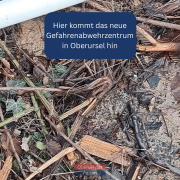Today I took a step towards using greener fuels – I ordered a car that runs on Bio-Ethanol.
This may sound all very green, but does this mean that I will have to go to special petrol stations – or will I even find somewhere to fill up?
Well, at home this should not be a problem, as the first Bio-Ethanol petrol station in Germany happens to be in Bad Homburg, so no problems there. For further afield there are a further 90 in Germany at present, according to the site e85.biz.
But what if there isn’t one near when I need to fill up? Well, the thing I like most about this is that the car is a so-called “flexifuel vehicle”. This means, that I can run on normal petrol if I need to or any mixture of the two, they even use the same tank so unlike other types of environmentally-friendly fuels I don’t have to switch over when one of them runs out.
It also costs less than normal petrol – currently the pumps show 130.9 cents per litre for “Super” in Oberursel – the Bio-Ethanol pump in Bad Homburg was showing 89 cents per litre. The main difference is down to tax, and cannot be completely considered as running on pure bio-ethanol can use 30% more fuel than running on normal petrol. But at the moment, that would still be cheaper.
So why is it considered greener? Well, according to the literature that I’ve been given, it’s all down to the CO2 cycle – the plants that grow to make the bio-ethanol fuel have absorbed the CO2 whilst they were growing, and when you run your car on it you just set it free again. The brochure claims that this saves up to 80% of CO2-emissions compared to normal fuel.
Anyway, that was the first step. Next I have to wait for the car to be delivered in a few weeks. I will report back then with my first bio-ethanol experiences.




I understand the CO2 cycle, but what exactly is bio-ethanol made of?
Maria
I understand the CO2 cycle, but what exactly is bio-ethanol made of?
Maria
Part of it is made of wood chippings that have been left over as waste when making other products, sometimes molasses are used, I have also heard of crops such as corn or sugar cane being distilled.
Part of it is made of wood chippings that have been left over as waste when making other products, sometimes molasses are used, I have also heard of crops such as corn or sugar cane being distilled.